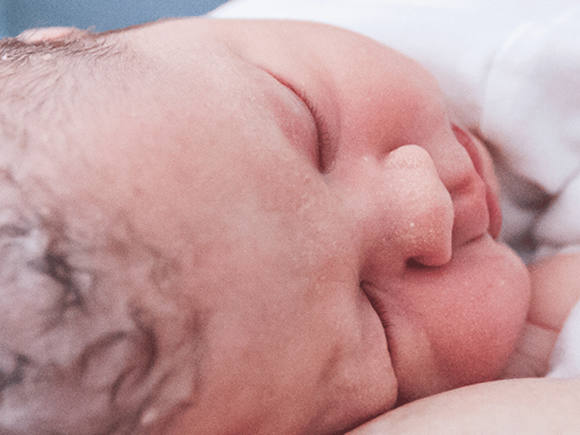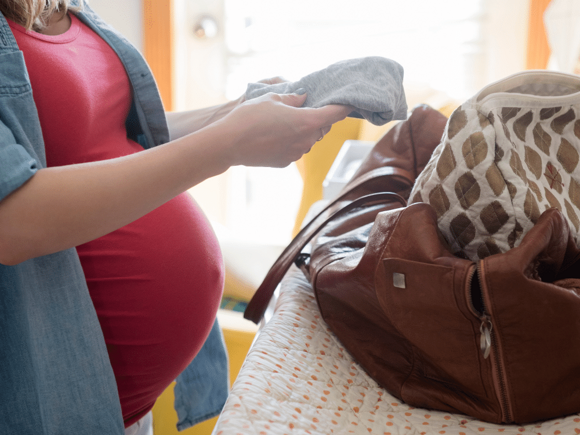Here's a breakdown of what can happen during birth - Everyone’s experience of giving birth is different, and it’s impossible to predict exactly what to expect. Allowing for unpredictability and informing yourself about possible outcomes can go a long way toward setting realistic expectations and reducing any anxiousness. All of which can help make your birth experience a positive one.
So what can happen during birth and what are the different types of ways of giving birth? From caesarean birth and vaginal birth, our simple descriptions and tips can help prepare you for your baby’s delivery day.
The two main types of delivery
Most babies are born vaginally, with or without some level of medical intervention such as pain relief, induction, forceps or vacuum extraction (also known as ventouse). Around 37% of babies in Australia - are born by caesarean birth, a surgical procedure commonly known as a c-section, or a caesar.
How your baby is delivered can depend on lots of factors, such as mum’s health and weight; baby’s health and weight; baby’s position in the womb or birth canal; and complications that might happen during labour.
You might have a strong preference for how your baby comes into the world. Keeping an open mind might help you deal better with any necessary changes on delivery day. The most important thing is that mum and baby are kept safe and well.
Giving Birth - Vaginal delivery
Vaginal birth involves the baby being born through the birth canal. How much pain relief or other interventions you have will depend on your birth plan and choices, your needs, and your healthcare professionals recommendations. A good thing to know about a vaginal birth - Your baby will be exposed to a number of beneficial bacteria through the birth canal, helping to kickstart their own immune system and support a healthy gut flora.
Birth centre or low-intervention hospital births only tend to be recommended for straightforward pregnancies and labours, where limited or no pain relief or intervention is required.
If your labour is delayed, progresses slowly, is painful or develops complications, you might need more help delivering your baby. This could include:
- Having your labour induced: Labour is induced when it is started artificially, before it spontaneously occurs. There are many reasons why women can be induced such as being overdue, having multiple births or having maternal high blood pressure. There are many ways of inducing labour:
- Artificially rupturing the membranes: This means ‘breaking the waters’ or rupturing the amniotic sac. This method is sometimes used in conjunction with other methods of induction.
- Prostaglandin: A gel may be inserted into the cervix with the aim of softening and thinning the walls of the cervix. This method may be individually used or in a combination with oxytocin.
- Oxytocin: Is a hormone naturally produced by the body which brings on contractions. A synthetic form of this hormone can be used in small doses if other methods of induction don’t work. It is given intravenously to bring on contractions.
- Having pain relief such as an epidural anaesthetic (an injection that delivers pain relief into your spine):
- Pain relief is an individual choice, and many mums-to-be have a ‘drug-free’ labour at the top of their birthing plan. You can choose to receive an injection once your baby is born to help you deliver the placenta – or you can deliver naturally on your own. There will be pros and cons of not using drugs during labour, be informed about the pain relief options just in case and remain flexible during your labour – after all it’s the happy healthy mum and bub that we’re aiming for at the end.
- Pain relief is an individual choice, and many mums-to-be have a ‘drug-free’ labour at the top of their birthing plan. You can choose to receive an injection once your baby is born to help you deliver the placenta – or you can deliver naturally on your own. There will be pros and cons of not using drugs during labour, be informed about the pain relief options just in case and remain flexible during your labour – after all it’s the happy healthy mum and bub that we’re aiming for at the end.
- Having an assisted vaginal birth through the use of forceps (metal spoon-shaped instruments) or vacuum extraction to help get the baby out of the birth canal. If forceps or vacuum extraction is needed, you’ll probably also need an episiotomy— a shallow cut into the lower vagina to keep your tissue from tearing - which will be stitched up after the birth.
As your labour progresses your doctor and/or midwife will speak to you about what interventions might be required.
Giving Birth - Caesarean Section or C-section delivery
Many women today have a caesarean birth. This is a surgical operation that involves making a cut in the woman’s abdominal wall to take out the baby. Running along the topmost section of the pubic hairline, it leaves a scar that usually fades over time.
Caesarean birth may be planned to take place before you go into labour (also called elective c-sections) or unplanned (sometimes known as emergency c-sections).
Your healthcare professional may decide that an elective c-section is the safest way to deliver your baby, for example if:
- You are carrying multiple babies,
- You or your baby has an underlying health condition,
- You have a low-lying placenta, or
- Baby is in the breech position (feet rather than headfirst) toward the end of your pregnancy.
You might need an emergency c-section if:
- Your labour is progressing slowly,
- You’ve been induced but have not gone into labour
- There are concerns about you or your baby that happen during labour
Most planned caesarean birth happen with a spinal anaesthetic, meaning you will be awake and won’t be able to feel much from the waist down and an epidural is more likely to be used for an emergency c-section. A screen can be put up so you can’t see the operation, an incision is made across your lower tummy and your baby is pulled out of your womb. If you’re anxious about having a scheduled or unplanned caesarean section start by working with your healthcare professional and get tips from other mums.
Want to know more about c-sections? Check out c-sections: what to consider.




